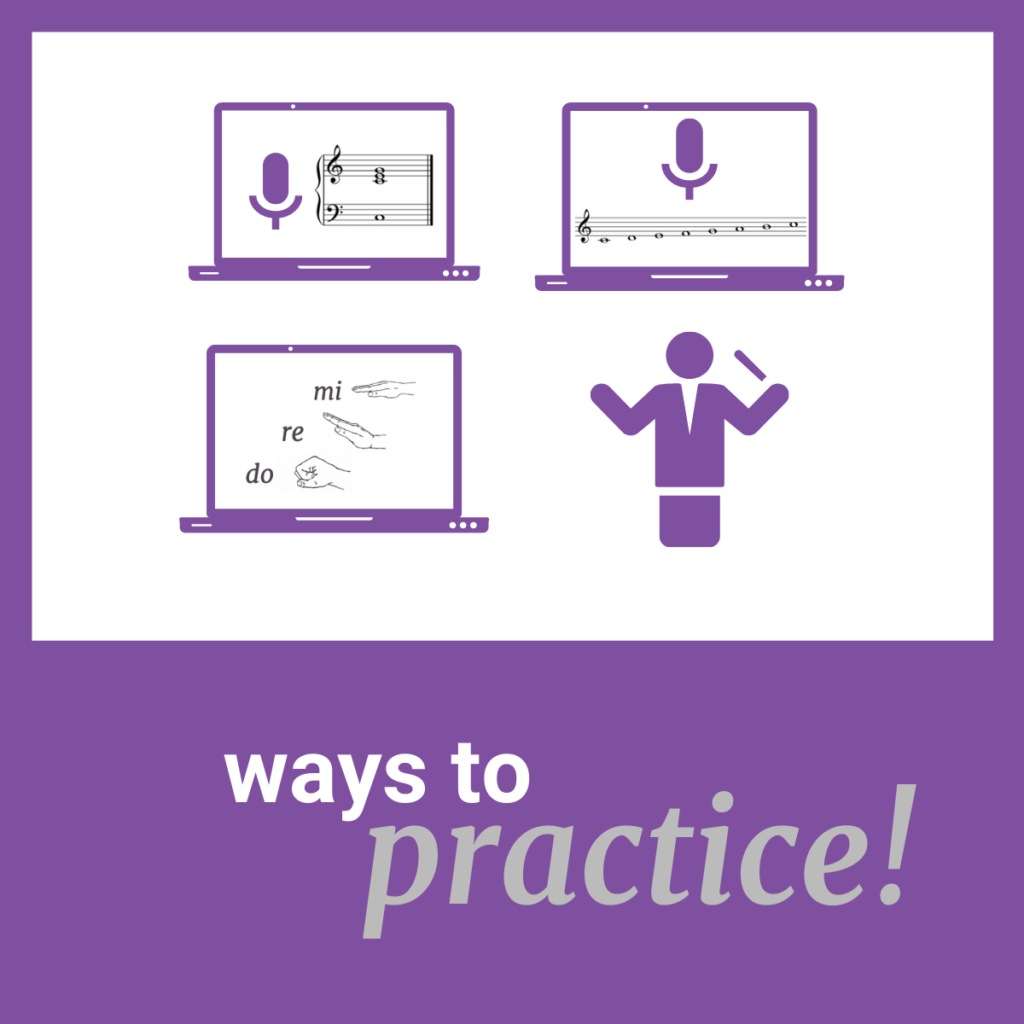Ways to Actually PRACTICE your musicianship skills: DSMusic’s Top Tips
Comments Off on Ways to Actually PRACTICE your musicianship skills: DSMusic’s Top Tips
Here at DSMusic, we’re big on all things music language, sequential scaffolding and skill strengthening.
Cracking into concepts and then taking learning all the way through to knowing.
Needing to “practice” is quite a catch-cry in the music learning space but sometimes it can be a little harder to model what that might look like for our students, as far as aural and theory practice is concerned. DSMusic content and resources has ways to practice skills and concepts woven deliberately throughout, so that we’re building incremental understanding and musicianship muscle memory.
Practicing well is scaffolding deliberate and consistent effort over a period of time – it’s also the opportunity to apply learning, which is vital.
Some practice ideas are outlined below, according to the concept area.
Rhythm
- say Rhythm Names aloud while walking the beat (on the spot) and tapping the rhythm (and vica versa)
- say rhythm names aloud while Conducting with your right hand, and tapping any semiquavers with your left hand
- say rhythm names aloud while tapping an ostinato
- say rhythm names aloud while Inner Hearing specific elements to highlight these
- say rhythm names aloud while clapping all rhythms except semiquavers, which are clicked
- say rhythm names aloud while clapping in canon
Scales
- sing all known scales in Solfa with Handsigns, from the same bottom/top (descending then ascending) note
- sing all known scales in Letter Names beginning on any chosen note, from the same bottom/top note
- sing scales while handsigning in canon (two notes after you begin singing)
- sing known scales in solfa with handsigns, with a partner who does the same task beginning two notes after you: in canon
- sing known scales in solfa with handsigns, inner hearing all tonic and dominant notes
Intervals
- sing one melody in solfa with handsigns – labelling the interval that is created by each pair of consecutive notes
- sing a melody, showing the handsigns, inner-hearing all solfa
- sing all ascending & descending 3rds in the Major scale in solfa with handsigns, e.g. do mi Major 3rd, re fa minor 3rd, mi so minor 3rd etc.
- sing all ascending & descending 3rds in the melodic minor scale in solfa with handsigns e.g. la do minor 3rd, ti re minor 3rd, do mi Major 3rd etc.
Melody
- sing melodies in known scales and modes in solfa with handsigns
- create your own clever echo activities with a partner
- Compose a melody and sing in solfa with handsigns
- sing melodies in known scales and modes in letter names in various keys
- sing melodies in known scales and modes in solfa with handsigns, inner hearing all notes that belong to the Dominant 7th chord
Chords and Chord Progressions
- sing all known triads and chords ascending descending in solfa with handsigns, labeling the intervals created by all included notes
- sing basslines of chord progressions in solfa with handsigns
- sing chord progressions vertically (each chord one note at a time ascending and descending)
- sing Major and harmonic minor Chord Charts
Important note:
This isn’t an exhaustive list, and certainly you need to find practice strategies that work for you and your routine. Here are some other less obvious ways you could squeeze some practice in:
- laminate a practice chart or a weekly plan and bluetac it to the (outside of the) shower screen so you can practice in the shower
- use inner hearing to practice tasks (or have “Deb in your ear” i.e. listen to the practice videos etc. using your phone) while you are “stuck” somewhere e.g. in a bus/train/car, while you walk somewhere, while you are trying to get to sleep etc.
Need a mini-piano to help you? Find Piano Apps for Apple and Android.
Read on for more….
Just like when you practice playing your instrument or singing, it works best when you chunk tasks, incorporate a variety of approaches – don’t just do it the same way over and over again – and efficiently use your time. An hour of crammed practice the day before an exam is no replacement for 5 minutes most days a week!
This video has ALMOST everything you need to help you practice!
Happy practicing! – Deb


Comments are closed